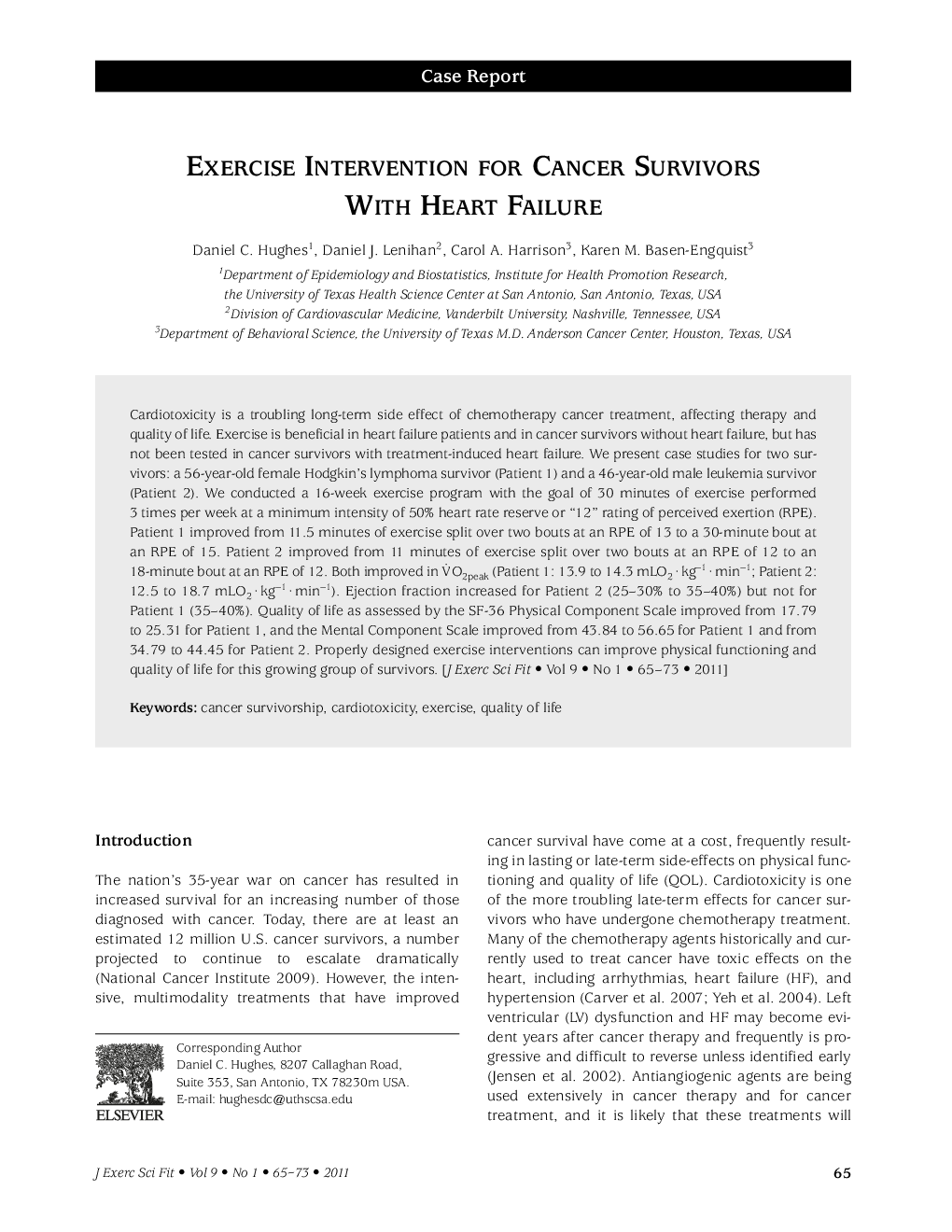| Article ID | Journal | Published Year | Pages | File Type |
|---|---|---|---|---|
| 2739699 | Journal of Exercise Science & Fitness | 2011 | 9 Pages |
Cardiotoxicity is a troubling long-term side effect of chemotherapy cancer treatment, affecting therapy and quality of life. Exercise is beneficial in heart failure patients and in cancer survivors without heart failure, but has not been tested in cancer survivors with treatment-induced heart failure. We present case studies for two survivors: a 56-year-old female Hodgkin's lymphoma survivor (Patient 1) and a 46-year-old male leukemia survivor (Patient 2). We conducted a 16-week exercise program with the goal of 30 minutes of exercise performed 3 times per week at a minimum intensity of 50% heart rate reserve or “12” rating of perceived exertion (RPE). Patient 1 improved from 11.5 minutes of exercise split over two bouts at an RPE of 13 to a 30-minute bout at an RPE of 15. Patient 2 improved from 11 minutes of exercise split over two bouts at an RPE of 12 to an 18-minute bout at an RPE of 12. Both improved in O2peak (Patient 1: 13.9 to 14.3 mLO2·kg−1·min−1; Patient 2: 12.5 to 18.7 mLO2·kg−1·min−1). Ejection fraction increased for Patient 2 (25–30% to 35–40%) but not for Patient 1 (35–40%). Quality of life as assessed by the SF-36 Physical Component Scale improved from 17.79 to 25.31 for Patient 1, and the Mental Component Scale improved from 43.84 to 56.65 for Patient 1 and from 34.79 to 44.45 for Patient 2. Properly designed exercise interventions can improve physical functioning and quality of life for this growing group of survivors.
